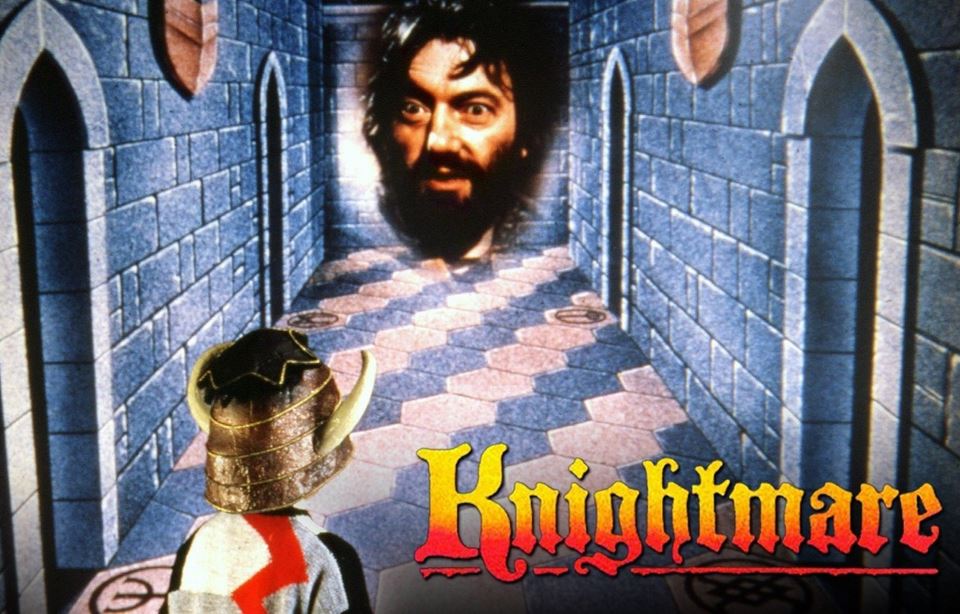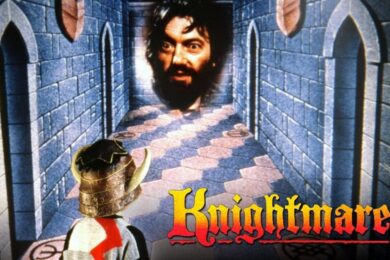“Where am I? What does that mean, ‘the world’? What does that word mean? Who has tricked me into this entire affair and now leaves me standing here? Who am I? How did I come into the world? Why wasn’t I consulted? … Is there no manager? To whom I shall direct my complaint? … Will no one answer?”
Søren Kierkegaard
“Where am I?”
Every Knightmare dungeoneer
It took courage to be a nerd where I grew up, courage I did not possess. In those days, to speak publicly of Bilbo Baggins was to invite bodily harm. A larger city would likely have afforded the safety in numbers that a community of fellow nerds might bring. In smaller cities like mine, you either went rōnin or you kept your interests to yourself. It was also an age of scarcity, where Japan felt like the other side of another planet, and comic books, albums and films from the US were talked about in legendary, cornucopian terms, given the ocean between us and them.
Before the internet, in Derry, a working-class part of the already peripheral province of Northern Ireland, a ‘country’ that no one living there, or anywhere, had really wanted upon its invention, we were well and truly islanded. Given that our little disputed corner of the United Kingdom and Ireland was undertaking an extremely convincing impersonation of a police state, culture from elsewhere, anywhere but there, took on near-samizdat qualities and importance. You discovered and hoarded it, or passed it around furtively, lest it be lost forever. It had real weight and currency. It felt not only that it belonged to you but that you belonged to it. And, because of this, it felt genuinely sacred, in a land of spoiled relics.
Publicly, I was the kind of horrible little bastard who loved nothing more than the sound of smashing glass, the sudden gallop of flame through a field of gorse or being chased down alleyways and across rooftops by the RUC/ army/ caretakers/ security guards/ hoods/ dogs/ fireworks and so on. Privately though, in my head, I was always halfway inside a semi-magic-realist world, holographically transposed on to the austerity of the surroundings, a view brought on by excessive reading and tacitly encouraged by my parents, who were hippies.
Enchanted by the maps at the start of fantasy books in the local library – housed in the basement of a former Presbyterian church, which was rumoured to be slowly capsizing – I began to secretly create my own maps of my neighbourhood, charting forbidden areas of treasure and trespass amidst the derelict houses, brutalist flats and waste ground, perhaps in an effort to understand a place that seemed both unreal and too real. I took great care for these never to be found by my fellow hyenas. Maybe now, looking back, they did the same.
There was one place where these underground attractions to the fantastical somehow breached the mainstream. Bookended by adverts and inane kids’-TV zaniness, there was half an hour of the week that was truly weird. It moved at a different pace and seemed to belong to an entirely different medium. Other children’s shows were like tiny, colourful, hyperactive fish in an aquarium briefly parting to show a glimpse of the kraken that was Knightmare.
The game show was dark, strange and occasionally frightening (bearing in mind I was in primary school when I started watching it). It seemed to encapsulate so many of the fragments and fixations I was slowly piecing together, not just in terms of escapist literature but actual history. Looking back, we often construct the pasts we wanted to inhabit, not by lying necessarily, but selective editing – some trimming here, some exaggerating there.
When I think of the 1980s now, it is like walking through a hall filled with veils: on each is projected a version that is not untrue but is nevertheless distorting. There’s the neon 80s, with cyberpunks dancing to synth music on the dancefloor of Tech Noir. Then there’s the black-and-white Joy Division 80s, ponderous and melancholic, all overcoats and cigarettes and concrete overpasses. Then there’s the Miam…



